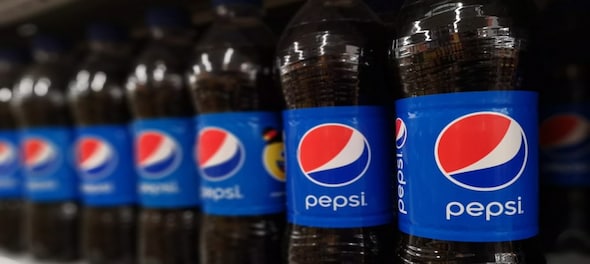
Pepsi and Netflix pulled off a marketing heist of sorts when they partnered to leverage the wildly popular Spanish series ‘Money Heist’. The post-pandemic rise in viewership on streaming platforms and cult-like popularity of the heist crime drama set the context for this first-of-its-kind collaboration with Netflix.
Using its biggest brand asset and first touchpoint with consumers, Pepsi's design team in India created limited-edition golden cans and packaging featuring series motifs and themes like Dali masks and 'Bella Ciao'. The brand will also host a virtual fan fest, #PepsiMoneyHeistParty, where fans can get exclusive content built around the show's central characters. But to access the party they'll need a golden can à la ‘Charlie and the Chocolate Factory'.
To kick-start the collaboration, Pepsi released a digital-only film featuring Bollywood's most athletic actor and the brand’s ambassador, Tiger Shroff, who pulls off a daring mission assigned to him by The Professor, a lead character from the show.
This partnership with the streaming giant is in line with Pepsi’s long-time strategy built around being a “culture curator”, as the company calls it.
How it works
So, what does it mean to be a culture-curator brand? In an interaction with Storyboard, Saumya Rathor, category lead - Pepsi Cola, PepsiCo, breaks it down for us.
Culture keeps changing and it's the marketer's job to find the right moments to embed the brand in ways that keeps it relevant. “Extensive consumer research over the years has helped us stay ahead of the curve and activate storytelling that resonates with the youth,” says Rathor, helping position Pepsi as a “culturally forward” brand that “keeps up with changing trends”.
Now it's Dali, but two years ago swag dadi was all the rage.
Rathor spotlights past campaigns like ‘Har Ghoont Mein Swag Hai’ with actors Tiger Shroff and Disha Patani and rapper Badshah, and the headline-making, cricket World Cup campaign featuring an over 80-year old superfan, Charulata Patel.
The brand followed up with last year’s Valentine’s Day anthem ‘Swag Se Solo’ and Salaam Namaste campaign to raise awareness for Covid-safety norms. Both featured "solo" actor Salman Khan.
Although Khan’s version of swag in the anthem video where he’s surrounded by women received some flak online, the campaign was a hit. The video crossed over 100 million views on YouTube in a short time and Pepsi’s #SwagStepChallenge created a record 51 billion hits on TikTok, the popular short-form video app which was later banned in India. Swag Se Solo challenge had over 5 billion hits with over 50,000 videos.
Beyond Bollywood
Shedding more light on the brand’s approach to hijacking moments and leveraging cultures that matter to its audiences, Rathor says, “Today’s generation appreciates when brands share topical content and that is why we have an ‘Always On’ social media strategy for Pepsi. Apart from topical content, we also identify hero moments at the beginning of the year which we would like to leverage, which are usually tied in with our campaign for the year.”
Spotting 'hero moments' involves a lot of listening intently to what young people say, do and like. “Social listening, consumer immersions or focus group discussions'' is how Pepsi keeps its finger on the pulse. But, you don’t need focus groups to tell you that the typical ‘passion points’ important to Indians are Bollywood, music and cricket.
‘Money Heist’ is not Bollywood, music or cricket. Still, it has gained cult-like popularity in India.
The bottom-line is that “Your brand must be a part of the culture because consumers are a part of that culture,” says Rathor. “Consumers no longer want to be told what their culture looks like, nor what stories should bear importance to their truth — they want to take part in that cultural development on a real-time basis and brands can make that happen for them.”
Check out our in-depth Market Coverage, Business News & get real-time Stock Market Updates on CNBC-TV18. Also, Watch our channels CNBC-TV18, CNBC Awaaz and CNBC Bajar Live on-the-go!


Lok Sabha Election 2024: Issues raised by Prime Minister Modi have not resonated with people of Tamil Nadu, says Congress
Apr 19, 2024 11:38 PM
West Bengal Lok Sabha elections 2024: A look at Congress candidates
Apr 19, 2024 8:45 PM

